Tribalism is human nature. We all do it. We all like to belong. But wild, gimlet-eyed youths like to belong more than anyone else. It’s like a genetic imperative.
Motorcycles tribes occur when motorcycles stop being tools and become leisure vehicles ridden by wild, gimlet-eyed youths.
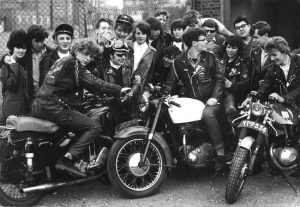
I’m thinking real motorcycle tribalism would have first started happening in the mid-50s in Australia. Up until then, Australia was far too busy pretending it was a much hotter and bigger version of England. It had no time for motorcycle tribalism. England would have disapproved.
But sport tribalism was OK. And no-one loves sport and sport tribalism more than Australia. We don’t have any kind of culture, so sport is like a default setting for our national identity.
The Auto Cycle Union of Australia (ACCA) was formed in 1928 to represent the interests of sports-based motorcycle clubs, and would eventually become Motorcycling Australia (MA), the country’s representative body for motorcycle racing.
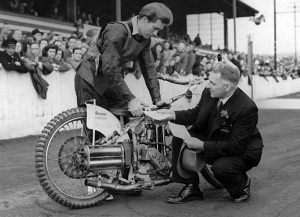
Organised motorcycle sport was actually established many years before that. And speedway racing was the first type of motorcycle competition to be run professionally. The late Johnnie Hoskins brought speedway to the world in 1923, holding his first meetings at Maitland Showground, and laying the foundation for future Australian successes at a world level. But other than these bizarre-to-normal-people sports, motorcycles were largely viewed as transport for people too poor to afford cars, and weren’t really all that practical outside of built-up areas.
Everywhere is far away in Australia because Australia is a big place. We’re a whole continent. We have three time zones.
Riding 1950s motorcycles anywhere but in built-up areas of Australia was the act of a madman. And while we did have a few madmen ready to brave the trackless wastes on old BSAs, very few of them lived to tell their tales.
But as life got easier and Australians became more urbanised, motorcycles started to become more popular. The weather was conducive to riding (we still ride all year long), and bikes were cheap to buy and run.
The first social clubs, the first real motorcycle tribes if you will, really started in the late 50s and early 60s.
And it’s just not possible to discuss motorcycle tribes in Australia without dealing with this apex predator, the outlaw motorcycle club.
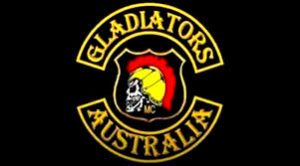
Australia’s oldest outlaw motorcycle club, the Gladiators MC began in Maitland (the home of speedway) in 1960, and exists to this day.
Motorcycle sport and outlaw motorcycle clubs have always been inextricably linked in Australia, as well as in England and the USA. Probably because until very recently, outlaw motorcyclists were very hardcore motorcyclists at heart. They literally lived and breathed motorcycling. It was not a hobby. It was a lifestyle. Drag-racing, road-racing, enduro, motocross – if it had two wheels and handlebars, outlaws were interested in it.
Also until recently, outlaw motorcycle clubs were unique to First World English-speaking societies. They originated in the USA in the late 40s, with oddly different but rather parallel outlaw clubs forming in England, New Zealand, Australia and Canada.
As the 60s became the 70s, and motorcycling became less acceptable to normal society (riders were regularly called “Temporary Australians”, “organ donors” and “hood ornaments”), motorcyclists began to take a perverse pride in their “otherness”.
And “otherness” is the prime motivator for tribalism.
Sure, not everyone was prepared to (or even could) become a one percenter, but they could certainly form social clubs.
And so they did. These bloomed in every major city and in many of the large country towns.
As bikes became more reliable, these social clubs began to diversify and became touring clubs. Motorcyclists stopped dying in the Australian outback and started riding through it.
As the 70s turned into the 80s, the Australian motorcycle rally scene entered its golden age.
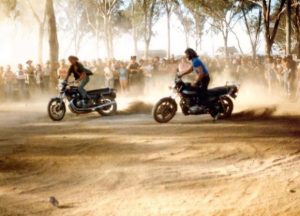 A motorcycle rally was really nothing more than a bunch of motorcyclists going to a chunk of land (preferably somewhere scenic and maybe even a little hard to get to), getting drunk, yelling at the moon around a campfire, and doing crazy stuff on high-powered Japanese motorcycles. Then we’d ride home on Sunday and go to work on Monday. Sometimes outlaw clubs came to the rallies, and that made everything even more exciting.
A motorcycle rally was really nothing more than a bunch of motorcyclists going to a chunk of land (preferably somewhere scenic and maybe even a little hard to get to), getting drunk, yelling at the moon around a campfire, and doing crazy stuff on high-powered Japanese motorcycles. Then we’d ride home on Sunday and go to work on Monday. Sometimes outlaw clubs came to the rallies, and that made everything even more exciting.
In the 80s, motorcycling was still not really socially acceptable, but this didn’t stop a huge wave of ersatz pretenders to the outlaw throne from appearing on the scene. The Harley Owners Group (HOG) appeared just as Harley-Davidson introduced its new Evolution motor. Suddenly, you no longer needed to know how to fix your Shovelhead Harley. You could just put petrol in your Evolution Harley and ride it. And you could also join HOG and festoon your leather vest with all sorts of cloth patches so that to the general public you looked a lot like a terrifying Hells Angel.
Happily, only a few HOG members were silly enough to sew patches to the backs of their vests, thereby aping outlaw regalia even more, and were soon persuaded this was a bad idea by several one percent clubs.
Alongside HOG, another national club appeared. It was called Ulysses and had the motto: “Grow Old Disgracefully”. You had to be over 40 to join and remained a junior member until the age of 55. In the ensuing decade, the Ulysses club became the largest social motorcycle club in Australia with 1000s of members, with HOG a very close second. But HOG was brand-specific, and indeed run and managed by Harley-Davidson’s marketing division, so it was (and remains) really far more of a marketing exercise than a club created and driven by members. Ulysses now has 138 chapters in Australia and dozens more chapters all over the world, with a membership in excess of 23,000.
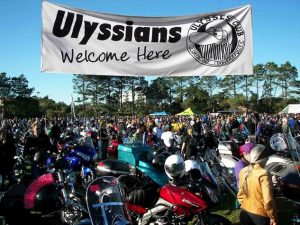
Things started to change in the 90s, and we can certainly blame the Internet and social media. The largest rider demographic was now approaching 40. Younger riders were being constrained by the law to buy smaller capacity motorcycles, and while many still signed up, many more had no interest in riding a 250cc bike for two years. Riders my age (I’m 56) learned to ride on big bikes. I made my bones on a GSX1100EX, the perfect bike for a teenager.
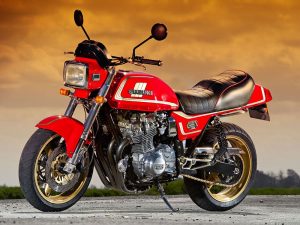
Still, the 90s and the early 2000s were boom years for Australian motorcycling. Social clubs blossomed, outlaw clubs grew exponentially with the Rebels MC now the largest of its kind in Australia with well over 1000 members, and HOG and Ulysses were at their peak.
Interestingly, motorcycle sport was in the doldrums. Competing series and strict drink-driving laws saw attendance plummet.
But people still rode bikes, and were tribalising even more. As social media grew, so the tribalisation of Australian motorcycling grew.
There were now tribes of track-day freaks, adventure-riding chieftains, nasty outlaws, wannabe outlaws, Facebook crews with catchy names or prosaic local identifiers (Sydney Riders, Melbourne Riders), dreadful hipsters, wondrous gaggles of girls, café racers, scooteristas, brand specific covens (Ducatisti, ’Busa lovers, Victory owners), stunters, beginners, mentor groups, suicide support riders, bikers against child abuse, bikers who like dogs, bikers who hate cats, bikers who ride only to eat pizza…in short, if you have a bike and access to Facebook, you can start a tribe.
How many of these tribes have any kind of future remains to be seen. HOG is slowly losing members and not replacing them, Ulysses now allows motorhomes to its events, and the government has just about crushed the outlaw clubs into invisibility. Social media groups continue to appear, but they lack any real cohesion or esprit de corps, probably because on-line personas don’t always manifest well in real life.
Maybe motorcycling in Australia has passed its golden age.
And maybe it’s just entering a period of chaos prior to some wondrous rebirth.
It’s hard to say, but it will be great to see from behind my handlebars.
(breakout aside)
MANY TRIBES
There are currently more than 70 organised and registered motorcycle clubs in Australia. There are maybe a dozen or so outlaw motorcycle clubs remaining, and there are any number of social-media-based motorcycle organisations and ride groups. These are not clubs in the strict sense of the word – there are no office bearers or elected officials and no membership fees are paid.
But they are, for good or ill, all motorcycle tribes.
(breakout aside)
WHAT DO I MEAN BY “OUTLAW”?
You’ve all heard of Hells Angels. They are the archetypal outlaw motorcycle club. All the others are almost identical variations on this theme, even if like the Boozefighters and the Galloping Gooses, they predate the Angels by a decade or more. They are also known as One Percenters – a name they adopted in 1947 following on from a small riot in Hollister, California. It wasn’t much of a riot, really. A small bunch of motorcyclists who were in town for the local motorcycle races got very drunk and raced up and down the main street, broke some bottles and raised some hell. The American Motorcycle Association deplored the actions of these few rabble-rousers and said that “99 per cent of motorcyclists were decent, law-abiding citizens…”
And so the one percenter was born.
Words by Boris Mihailovic
